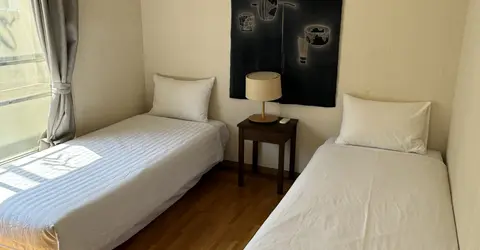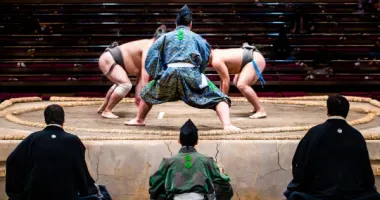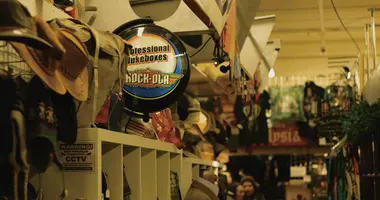Edo kiriko, an art of the Edo period 江戸切子
Tokyo's traditional glasses
The Edo Kiriko, literally "faceted object of Edo", is a type of traditional glassware that appeared in the Japanese capital at the end of the Edo period (1603-1868). Designated a national traditional craft since 2002, Edo Kiriko is distinguished by its colors, its wide variety of patterns and its luminosity enhanced by a unique method of cutting the glass into facets.
A craft with Western origins born in Edo
The Edo Kiriko originated in the work of a craftsman from the Daidenma-cho district of Edo (the former name of Tokyo ), Kyubei Kagaya.
Owner of a wholesale pearl shop, this glass craftsman began in 1834 to carve and cut the surface of glasses and bottles from the United Kingdom using emery powder; a rock of great hardness which, once reduced to powder, can be used as an abrasive for cutting and polishing glass. These sculptures by Kyubei Kagaya are considered to be the first Edo Kiriko.
An anecdote relates that Commodore Perry, commanding the famous American "black ships" which arrived in Japan in July 1853, would have been offered a bottle sculpted by the master craftsman. The soldier would then have been greatly surprised and impressed by the delicacy of Kagaya's cut glasses and the skills necessary to carry out this work.
In 1873, the Shinagawa Kogyo glass factory was founded under the industrial development policy of the Meiji government. Emanuel Hauptmann, an English engineer experienced in modern glass cutting techniques, was invited there in 1881 to provide advice and pass on new skills to Japanese glass artisans. The British technological contribution coupled with Japanese know-how gives an unparalleled boom to the Edo Kiriko.
Many workshops are springing up in the Koto, Sumida, Edogawa, Katsushika, and Ota districts in Tokyo as well as in other areas outside the capital in the prefectures of Saitama, Chiba, Kanagawa, and Ibaraki.
- Read also: The glass village in Hiroshima
The technique of Edo Kiriko
The technique developed at the end of the 19th century is still the one that glass artisans use today. This persistence of the tradition has earned Edo Kiriko the recognition of the greatest Japanese cultural authorities. It was designated Tokyo Traditional Craft in 1985 and National Traditional Craft in 2002. The name Edo Kiriko is also strictly controlled and reserved for glass products made manually using traditional techniques and tools and produced in the Kanto region, although production is mainly concentrated in certain districts of Tokyo.
The production process is divided into several stages :
- Sumitsuke (or Waridashi) or marking: vertical and horizontal marks are marked on the surface of the glass to serve as guidelines when cutting.
- Arazuri or rough grinding: the glass is cut using a metal disk or a grinding wheel to roughly produce the patterns and the first contours.
- Sanbangake or precision cutting: the very fine cuts allowing the most subtle patterns to be drawn are made using a grinding wheel and emery powder. The patterns are determined by the depth and angle of the cut.
- Ishikake or whetstone: the glass is smoothed with a whetstone.
- Migaki or polishing: the surface of the glass is polished using a water-soluble abrasive. This step maximizes the brightness and beauty of the patterns.
- Bafukake or polishing: cerium oxide dissolved in water is applied to the polishing wheel to complete the smoothing and polish of the glass.
Originally, this work was done only on transparent glass. But for several decades already, colored glasses (red, blue, yellow) have replaced entirely translucent creations. These objects are composed of two layers of glass: a colored layer on the outside and a second transparent one on the inside; the size of the patterns on the colored surface thus reveals the inner layer.
This technique results in the superb play of contrast and light of the Edo Kiriko. Appreciation of the patterns and visual effects greatly depends on the light and the angle from which you view an Edo Kiriko. Thus, by tilting the glass, it is possible to admire magnificent rainbow reflections. Something impossible to see with an ordinary modern glass object.
A tradition still rooted in Tokyo
Another characteristic and not the least is the immense variety of patterns encountered: chrysanthemums, hemp leaves, turtle shells, cloisonné, or bamboo leaves are just a few examples. Geometric, naturalistic, decorative, traditional patterns... the list is long! Moreover, craftsmen are constantly adding new forms to the long traditional repertoire.
One can thus find today Edo Kiriko reproducing kumadori (stage make-up of kabuki actors). Conversely, some very fashionable patterns during the golden age of Edo Kiriko which covers the Taisho era (1912-1926) and the very beginning of the Showa era (1926-1989) fall into disuse. . This is the case of the "hasudome" motif which is now only produced in one workshop in the capital. This is a shame, especially when you know that the latter changes appearance once the glass is filled with water!
The supports themselves have evolved. The Edo kiriko is available on glasses, bottles, dishes, sake glasses, whiskey glasses, lighting and watch dials. If there were still 700 Edo kiriko craftsmen 50 years ago, today this figure is much lower. There are only a hundred left to perpetuate this 150-year-old glass craft. Many workshops are located in the Sumida district at the foot of the Tokyo Skytree. The presence of these traditional craft workshops in the neighborhood is also welcomed within the tower itself. Thus the magnificent interior glass decoration on the theme of the 4 seasons in the 4 elevators which go up to the observation deck of the Tokyo Skytree is the work of one of the surrounding workshops.
Read also: The Tokyo Skytree, an observatory over Tokyo
Where to find and buy Edo Kiriko glasses?
- Sumida Edo Kiriko kan
Both an exhibition hall and a shop, the Sumida Edo Kiriko kan, founded in 1899, retraces the history, the production process of the Edo Kiriko as well as the tools used. All the objects presented (more than 350) are for sale. Count around $67/60€ for a small model. The little extra of the place: it offers introductory workshops (only by reservation and from 4,320 yen or $37.50/33.75€).
Address: 2 Chome-10-9 Taihei, Sumida-ku, 130-0012 Tokyo
Hours: Open from 10 am to 6 pm Closed on Sunday.
Phone: +81 3-3623-4148
- Kagami Crystal shops (Ginza and Palace Hotel)
The Kagami Crystal glassworks was founded in 1934. Particularly renowned, it supplies glass objects to the imperial household agency for official receptions. Do not hesitate to visit one of its two shops that offer Edo Kiriko objects.
Ginza shop
Address: Daiwa Building, 2-1, Ginza 6-Chome, Chuo-ku, 104-0061 Tokyo
Phone: 03-3569-0081
Opening hours: open from 11 am to 7:30 pm (until 6:30 pm on weekends). Closed on Thursday.
Access: on foot, six minutes on foot from JR Yurakucho station, or five minutes from Tokyo, Ginza, Hibiya, Ginza, and Marunouchi subway stations.
Boutique Palace Hotel
Address: Level B1, Palace Hotel Tokyo 1-1-1 Marunouchi, Chiyoda-ku, Tokyo 100-0005
Phone: 03-6206-3321
Opening hours: open every day from 11 am to 7 pm
Access: Tokyo Metro Otemachi Station Exit C13b or 10-minute walk from JR Tokyo Station.
If you wish to know other addresses of shops and workshops, you will find all the useful information on the site http://www.edokiriko.net/





































